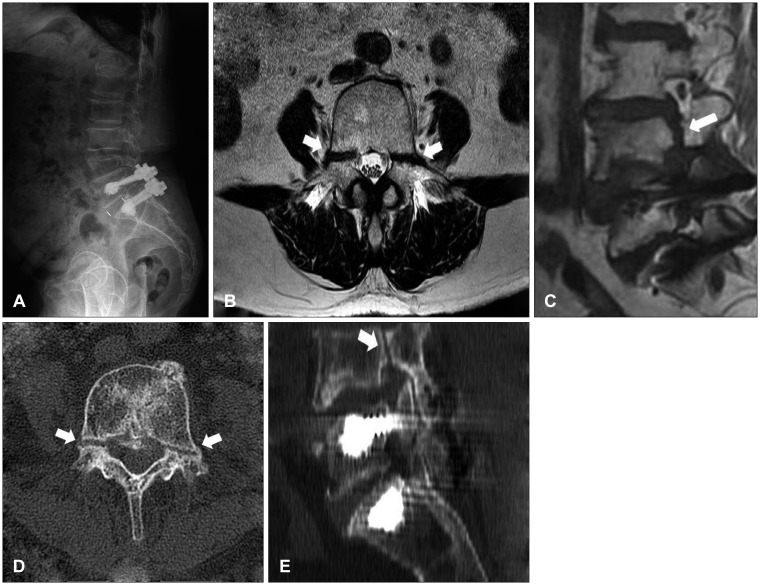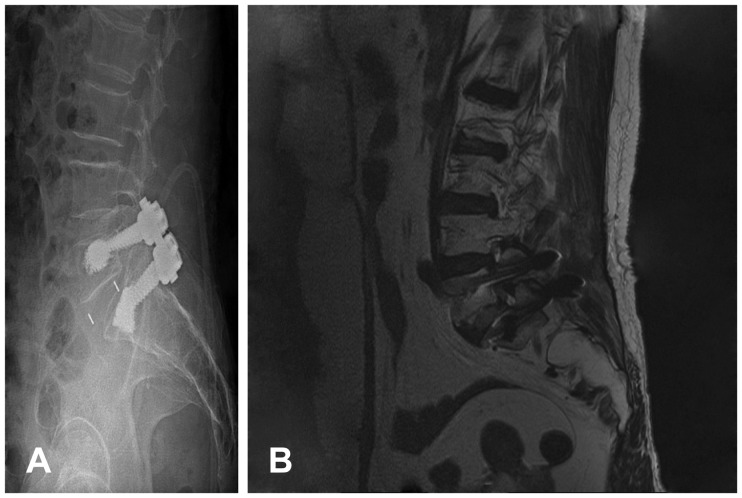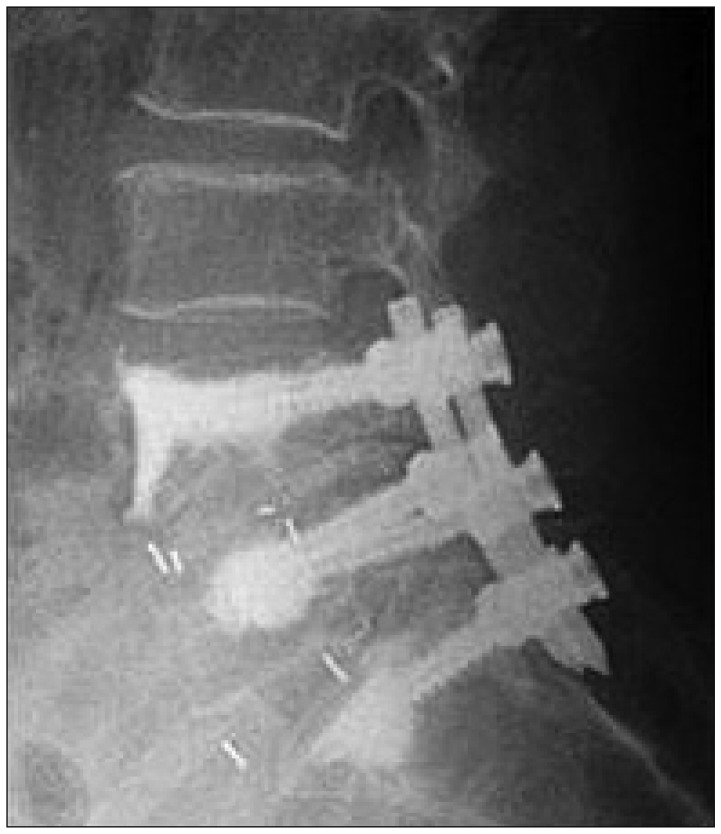Osteoporosis contributes to cephalad compression fractures
due to altered biomechanics in adjacent segments caused by junctional failures associated with loss of motion at fused segments.
6) Fused lumbar segments may increase stress and motion at adjacent unfused segments and accelerate degeneration. However, adjacent fracture of bilateral pedicles after instrumented lumbar fusion is extremely rare and to our knowledge, no such case has been previously reported. Furthermore, bilateral pedicle fractures are rare and have only been reported on a few occasions.
2458910) In these reported cases, most bilateral pedicle fractures were generally related to previous spine surgery or stress-related activities, and pedicle stress fractures after lumbar fusion surgery occurred at the most proximal or distal level of fusion.
6) To our knowledge, three cases of bilateral pedicle stress fracture after lumbar fusion without screw removal have been reported,
8910) and two of these cases occurred at the uppermost level of fusion.
89) Tribus and Bradford
10) described the case of a patient treated by posterior spinal fusion using segmental instrumentation from T3 to L4 who developed fractures of the lowest L4 pedicle. However, in this case, the adjacent upper level of the L4 pedicle was involved after instrumented L5-S1 fusion. Repetitive mechanical stress fractures in the posterior elements are usually located in the pars interarticularis or to a substantially lesser extent, in the pedicle. The pedicle has great intrinsic strength and a short moment arm from the vertebral body, and can therefore resist greater cyclic shear forces.
4) As a result, the pedicle is an uncommon location of fracture at the posterior neural arch. Rather, fractures are more frequently observed in the isthmus, which corresponds to the weakest zone. Nevertheless, bilateral pedicle fractures at adjacent levels can occur due to surgically acquired disturbance of the neural arch. Adjacent pedicles associated with spinal fusion masses may experience abnormal repetitive shear forces and cantilever because of continued motion through intervertebral discs and the pars interarticularis.
10) In our patient, the fractures appeared to be fresh, because no sclerotic change was evident at fracture margins in spite of the absence of a trauma history.
6) We had performed bone cement augmented screw fixation at L5-S1 level. The overstiffness and enhanced strength may increase the risk of bilateral pedicle fractures of adjacent, non-augmented vertebrae, because of increased biomechanical stress. We fused the L4-5 segment to stabilize the pedicle fractures, and the solid stabilization may result in pain relief, and allowed our patient to return to normal activities.





 PDF
PDF ePub
ePub Citation
Citation Print
Print




 XML Download
XML Download